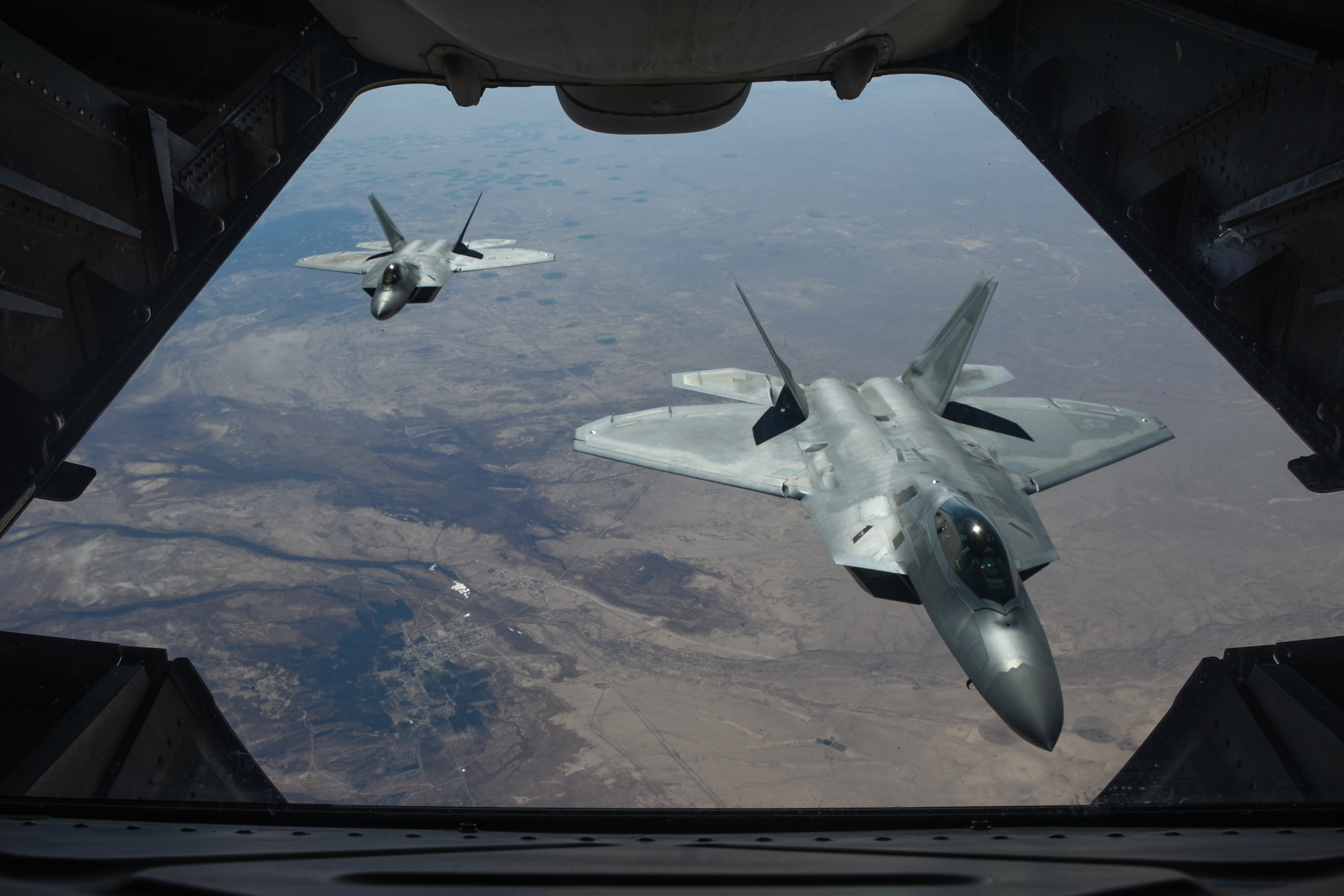
F-22 Raptors—like the ones above flying in Syria supporting Operation Inherent Resolve in early Feburary—provided cover as US forces drove back an attack Feb. 7. ANG photo by SSgt. Colton Elliott.
?US joint terminal attack controllers coordinated fires for more than three hours, with air support from B-52s, F-15Es, AC-130s, and US Marine Corps UH-64 Apaches to drive back an attacking force of more than a battalion of pro-regime fighters through the night on Feb. 7 in eastern Syria.
Lt. Gen. Jeffrey Harrigian, commander of Air Forces Central Command, provided more detail Tuesday on the Feb. 7 attack, which he said further complicated a diverse battlefield in eastern Syria. US and Syrian Democratic Forces, for about a week, watched the battalion-sized force—complete with artillery, tanks, and multiple rocket launcher systems—build up before the midnight attack.
USAF MQ-9s and F-22s were providing protective over watch when the attack began, first with artillery and tank strikes providing cover fire as the dismounted battalion force began to march.
US officials in the Combined Air Operations Center at Al Udeid AB, Qatar, called Russian officials over the established deconfliction channel before the strikes began. But, for more than three hours, JTACs controlled “a lot” of bombs from the fleet above. Eventually, the force stopped its advance and retreated west and the airstrikes ended.
“Those guys did some phenomenal work. … They were working closely with the ground commander and under significant pressure and in a very intense environment, and they basically were able to manage that situation and self-defend themselves, and the SDF partners, in a magnificent fashion,” Harrigian said of the JTACs.
There were about 100 fighters killed, though US officials are not speculating on their nationality. Unconfirmed reports claim many of the fighters were Russian citizens fighting on behalf of Syrian President Bashar Assad.
The airstrikes were conducted in self defense, Harrigian said, and the US-led coalition wants to get back to solely focusing on fighting ISIS. The distraction, however, has continued. On Saturday, a US MQ-9 struck and destroyed a Russian-made T-72 tank in eastern Syria. The tank was firing on a US-backed Syrian Democratic Forces position, once again forces the coalition to act in self defense, Harrigian said. US officials have not determined the nationality of the tank operator, and it was the only vehicle destroyed in this incident.
As the battlefield in Syria has evolved, US aircraft have watched Russian aircraft shift away from the Euphrates River Valley and further up northwest “in support of their specific objectives there,” Harrigian said. This includes supporting forces allied with Assad and has meant there have been fewer in-air interactions between US and Russian aircraft.
“It clearly is a very complicated and complex environment,” Harrigian said. “And for both our forces on the ground, and I would say for our forces in the air, this environment requires the professionalism and discipline of a force that’s able to manage and understand the environment such that we can make timely decisions in terms of understanding, No.1, how we’re going to protect ourself, and then, No. 2, get after the ISIS fight.”